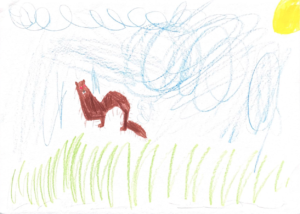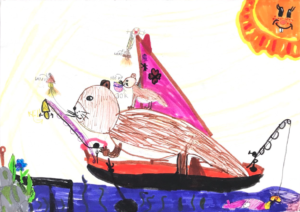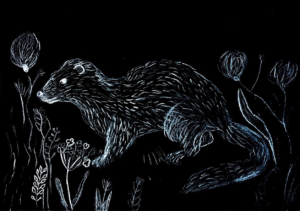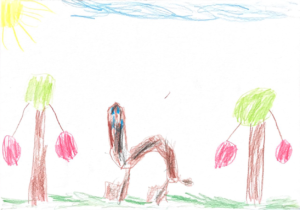This year, six litters with 33 young minks were born in the Tallinn Zoo as well as two litters with eight young minks in the semi-natural enclosures in Hiiumaa.
Riinu and Donald had the biggest litter (7 kits, 4 males and 3 females, or 4.3 as it is marked in the zoo databases). Young Rapuntsel, who turned 1 year old this spring, had the smallest litter. There are three bright-eyed youngsters wondering the world in her enclosure on the island of Hiiumaa, two males and one female.
The average litter size for European minks in nature is four. Our females usually have more kits with the average litter size this year being 5.1.
For now even the youngest minks (born on May 31st) are going to be 2 months old. European minks start to come out from the nest after their eyes have opened (ca. month old). Presently they are almost the same size as their mother, some male minks are even larger, running around, chasing each other and enjoying splashing in the water.
Häbelik, who was sent to Hiiumaa, didn’t have kits and she was released on June 26. Since July 1st, Nunnu lives in the enclosure with her 4 youngsters and are awaiting release.
On the 12th of July, Rosin along with her three kits, who were born in the wild, were brought to the Tallinn Zoo. She had begun to beg for food and steal from a restaurant as well as teaching this to her young. Restaurant food can also be tasty for minks, but behavior like this is not suitable for proper wild animals. We then had to trap them and bring them to the zoo. Hopefully their descendants can make it without cutlets of organic beef when released.

Young European minks, Hiiumaa (by Tiit Maran)





















